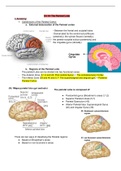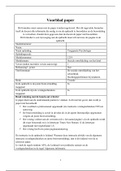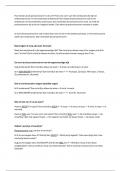Samenvatting
Summary Problem 1-Motor and Sensory Systems
- Instelling
- Erasmus Universiteit Rotterdam (EUR)
This document contains extensive summary of the chapters 9- 13- and 14 (occipital, parietal, and motor system) along with the three articles (on apraxia, prism adaptation, and rehabilitation of visual agnosia and Balint's syndrome.
[Meer zien]






